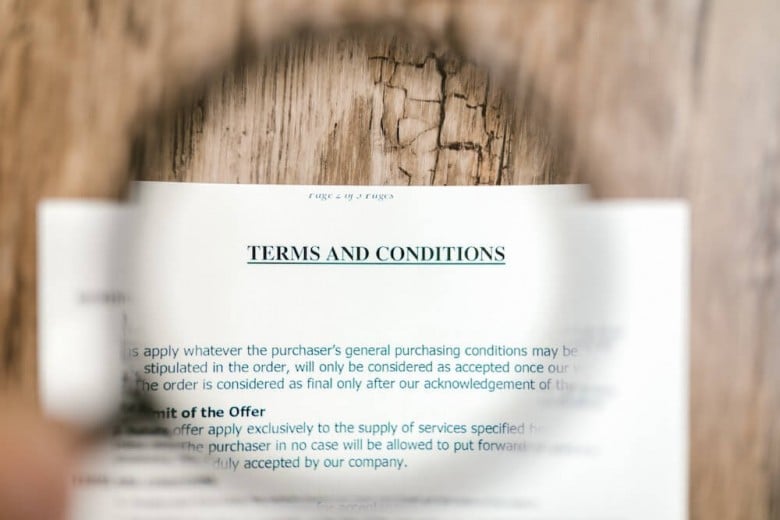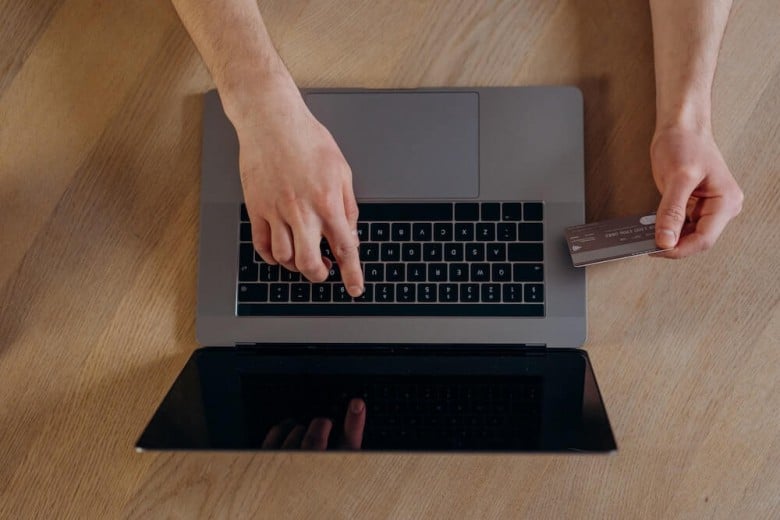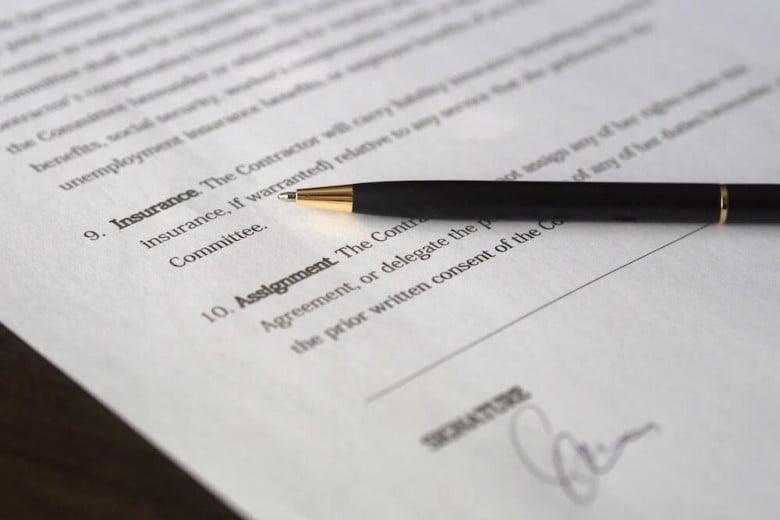Vrbo Damage Deposit: How to Protect Your Property
Last updated: March 2024
As one of the largest vacation rental listing sites in the United States, Vrbo is incredibly well-known amongst short-term rental owners and property managers. Chances are you currently have a property listed on Vrbo, have in the past, or will in the future. Therefore, it’s a good idea to understand the ins and outs of their damage deposit policies.
After all, you’re putting in a lot of hard work to maintain and promote a beautiful property—ensuring you have the right parameters in place to protect your vacation rental is the best way to guarantee that your hard work isn’t ruined by reckless guests.
Damage deposits keep both the guest and the host accountable for keeping the property looking its best. Though it’s uncommon to have any serious damage occur, it is normal to expect some wear and tear as you have guests coming and going on a regular basis.
In this chapter of our Ultimate Guide to Listing on Vrbo, we’ll outline the different damage deposit options on Vrbo, how to add damage protection to your listing, and why this is important to you as a host. We will also cover some frequently asked questions about Vrbo damage deposits to help you protect your property in the way that works best for you.
Don’t see the form to download our Ultimate Guide to Listing on Vrbo? Click here.
How to protect your Vrbo property from potential damage
As a host, Vrbo provides you with numerous ways to protect your property from potential damages. Examples of damages Vrbo covers include broken glass or appliances, damaged furniture, and any additional cleaning required due to things like pet dander, smoking, or undeclared pets or guests.
To minimize risks, guests are also made aware that they are responsible for damages to the property at multiple different points in the booking process (on the property description page, under House Rules, at checkout, and after the booking).
While this is usually enough to cover most issues, establishing a damage deposit policy that is both reasonable for the guest and covers all your bases as the host is a crucial step when listing your property on Vrbo.

Outside of the damage deposit, another way to protect your Vrbo property from potential damage is creating a short-term rental agreement that details the current state of the property and what procedure will be taken if damage is found. Having your guests sign this contract before arrival ensures that there is no room for miscommunication about how they should treat the property.
This can also help eliminate the possibility of guests filing a dispute if/when you need to file a damage claim. It should cover things like what kind of damage will result in the guest losing their refund and how they will be issued a refund if no damage is found. You can also communicate your expectations when it comes to events, pets, children, and smoking under House Rules. The clearer you make your house rules, the easier it will be for guests to follow them.
Vrbo damage deposit
The Vrbo damage deposit is a policy put in place to protect properties and hold all parties accountable. The guests are responsible for treating your property with respect, and you are responsible for making sure it is well maintained and inspecting the property after each stay to determine whether a damage claim needs to be filed or not.
Many other vacation rental platforms like Airbnb, Booking.com, and Expedia have very similar damage deposit policies. Currently, the default is for Vrbo to store the card on file (more information below), but in the past, the default used to be a refundable damage deposit charged at the time of booking.
As the host, you have a lot of flexibility to choose which Vrbo security deposit option you want to add to your listing and the amount/level of coverage. Vrbo offers three different options for damage deposits which we will cover in more detail below.
What’s the average amount of Vrbo damage deposits?
The damage deposit amount does a few things; it makes sure you are covered for any potential damage, and it encourages renters to take good care of your property, but it doesn’t deter potential guests from your listing. If the price is too high, it could change a potential guest’s mind. If it’s too low, it may give a certain impression about the quality of your listing. Clearly, you have to choose the amount wisely! You may choose to either set a fixed damage deposit amount or charge a percentage of the total.
Generally speaking, hosts set an average damage deposit of 250-500$ as a fixed rate. If you’d rather charge a percentage, 10% of the total rent is standard. If you do the math and 10% will be notably higher than the fixed amount, it’s generally better to charge the percentage. When in doubt, take a look at what other hosts are charging for properties similar to yours and make your decision from there.
Additional insurance
Having a good vacation rental insurance policy is also an important step in protecting your property. Vrbo recommends Proper Insurance to hosts as the best option for vacation rental insurance, and it replaces any homeowner or landlord insurance you may have in place now.
How do Vrbo damage deposits work?
As the host, you have a few options in terms of damage deposits when listing your property. For instance, you are able to choose the amount of your Vrbo refundable damage deposit and whether the deposit will be refunded seven or 14 days after guests check out. As you can see, you have a lot of flexibility to pick the perfect policy for your property! You are able to change all of these settings from your Vrbo account.
It’s important to keep in mind that even though the damage deposit is added to the total when a guest makes a reservation, those funds are not deposited directly to you. Vrbo hangs on the deposit for the duration of their stay and then you have seven or 14 days to make a damage claim if you do find an issue with the property. Only then will you be able to withhold either a portion of the deposit or the entire amount.
As you’re building out your Vrbo damage deposit policy, here are a few things to consider…
Card on file
In 2020, Vrbo changed the default from the refundable damage deposit option to the card on file option. That means that unless you have specifically changed it, this is the damage deposit policy currently being used for your listing.
For this option, Vrbo stores the credit card information of the guest at booking (you don’t have access to this information). Then, you have up to 14 days after checkout to submit a claim for any damages you find on the property. The guest will be notified of the claim via email, which includes a message from you describing the damage, and their card on file will be charged for the amount you specify (whether that is the whole deposit or only a portion).

Vrbo states that they will cover all valid claims up to the amount you set as your damage deposit, even if they aren’t able to successfully charge the guest’s card (in the case that it is expired or maxed out). You may feel uneasy about choosing the card on file option because of the lack of security, but rest assured that you should be covered in the case of damage.
Though Vrbo does not require photo evidence when filing a claim, it is always a good idea to take as many photos as possible to document the damage. You can keep these for your own record and also send them to the guest to explain why you are filing the claim.
If you need to file a damage claim, it is best practice to message the guest ahead of time describing the damage with photos so they aren’t surprised by the claim email from Vrbo.
Refundable damage deposit
An upfront refundable damage deposit is another option to consider for your listing. This option allows you to set a deposit amount that the guest will be charged at the time of booking.
The guest will see this charge in the price breakdown in addition to the rent, cleaning fee, and service fee at checkout. Think of this as a preemptive charge in case you do find any damage upon assessing the property. The deposit does not go directly to you either though; Vrbo will hold it throughout the booking process and the guest’s stay.
Like the option above, you then have up to 14 days after checkout to inspect the property, and if you don’t file a damage claim to Vrbo within that time frame, the amount is automatically deposited back to the guest. If you do find damage, you can submit a claim and withhold up to the amount of the deposit.
Vrbo prioritizes processing these claims very quickly, but keep in mind it may take up to seven days for the deposit to arrive in your account. If the amount you claim is less than the deposit, the guest will be refunded the remainder.
Charging a refundable damage deposit may seem like the safest option, but it does come with a downside. According to an analysis of 100 guest reviews on Trustpilot, charging a refundable damage deposit has the potential to sway guests’ booking decisions. 6% of guests felt like the damage deposit amount was too high, and 8% stated they no longer trust Vrbo after experiencing problems with deposits. If you do choose to go the fundable damage deposit route, make sure the amount is reasonable and you clearly communicate your expectations to guests.
Property damage protection
Finally, you can require guests to purchase property damage protection instead of a damage deposit at the time of booking.
Vrbo offers damage protection insurance through Generali Global Assistance with a few options for different levels of coverage. If you choose this option, you can select which coverage amount you require. Guests will see the property damage protection charge at checkout, just like the refundable deposit.
Essentially this is just an insurance policy the guests purchase that would cover any damage that may occur during the stay. Think of it like buying a short-term renter’s insurance policy.

The pro to this option is it guarantees you will be covered for any damage up to the amount you set. The con? The fee guests pay (though usually much smaller than the refundable damage deposit) is not refunded after the trip. It’s like a middle ground between the two previously mentioned options. You are able to side-step any concerns from guests about potentially not getting their refund back, but it can feel more secure than charging a card on file.
How to add damage protection to your Vrbo listing
Adding damage protection to your listing is very simple! Just follow these next steps:
- Log in to your Vrbo account
- Select which listing you’d like to add damage protection to
- Select Calendar
- Select Settings, and then Damage protection
- Choose between Damage deposit (in which case it will ask you to enter an amount) or Property damage protection (in which case it will ask you to choose a coverage amount)
If you don’t go through this process, the default is the card on file option.
How to file a damage deposit claim on Vrbo
As we’ve mentioned before, you’ll have up to 14 days after a guest checks out to inspect the property and file a damage deposit claim if need be. When you file a claim, Vrbo will ask you to describe the damage, and that description is shared with the guest.
To file a damage claim:
- Log in to your Vrbo account
- Select which listing you’d like to submit a claim for
- Select Inbox
- Select the guest’s name
- Select Damage protection
- Select Report damage
- Insert the amount you wish to claim (not more than the total deposit)
- Write a brief but detailed description of the damage (don’t forget this gets sent to the guest)
- Select Confirm
Outside of the formal claim filing process, we highly recommend you message the guest through Vrbo about the damage you noticed, how much you are withholding from the deposit, and include any photos.
Not only is it the best way to be a respectful host, but it also minimizes the chances of guests submitting a dispute. Plus, you will have written proof that you clearly communicated the damage and claim process to the guest. It’s always better for them to hear it from you in a polite message than to be caught off guard by an email from Vrbo.
Why are Vrbo damage deposits important for hosts?
Now that you know what all the options are, surely you’re wondering which choice is right for you and your property. While you make your decision, we have a few more thoughts to add on why damage deposits are important for hosts.
It gives you peace of mind
You will know that the deposit has already been paid and it’s there if you do need to cover some damage. If not, it’s automatically refunded, and you never have to worry about it. The whole process is very streamlined, and Vrbo has done a great job of making it as easy as possible for hosts.
It’s the perfect opportunity to enforce your House Rules
Unfortunately, House Rules are often overlooked when guests book stays. By requiring a damage deposit you direct your guests’ attention back to those rules and give them a compelling reason to follow them (they want that deposit refunded!). So if you want to be extra sure that your vacation rental property doesn’t become the party house for the nearby fraternity, we recommend including a damage deposit.
It shows your guests that you care
Wear and tear is to be expected over time, but in order to give your guests the best possible travel experience, you want your property to look as clean and well-maintained as possible. Requiring a security deposit shows your guests that you care about keeping the property well-maintained, which gives them an idea of the high-quality service they can expect from you as a host.
Frequently asked questions about Vrbo damage deposits
Still unclear on the specifics of the Vrbo security deposit? Take a look at a few of these frequently asked questions:
How much damage deposit should I charge on Vrbo?
You can either charge a flat rate or a percentage of the total price. Typically hosts charge between 250$ to 500$ as a flat rate or 10% of the total booking price. You can take a look at other listings similar to yours to choose an appropriate amount.
How can I add a damage deposit on Vrbo?
Adding a damage deposit on Vrbo is really simple! Vrbo does a great job of outlining the process in this article Add or edit damage protection for your listing.
Are damage deposits automatically refunded to guests?
Damage deposits are automatically refunded 14 days after checkout if you do not submit a claim. No need to facilitate the deposit; Vrbo handles it all on their end.
Should you add a Vrbo damage deposit?
At the end of the day, choosing to add a Vrbo damage deposit boils down to what makes you feel most comfortable as a host. It can be helpful to speak with other Vrbo hosts about what they do and take a look at listings similar to yours to see what policy they are implementing.
The goal of the damage deposit is to protect your property as much as possible without deterring any potential guests. You may even go through a period of trial and error to figure out which policy and which coverage amount hits the sweet spot.
Vrbo clearly gives hosts a lot of freedom in terms of the damage deposit policy, which can be both liberating and overwhelming. When you’re juggling multiple properties listed on multiple other vacation rental online listing sites (like Airbnb or Expedia), the last thing you want is to add more to your plate.
Luckily, nowadays, it’s easy to find great solutions to streamline your day-to-day operations when managing a short-term rental. For instance, Lodgify’s channel manager allows you to connect your Vrbo listing with the top online travel agents to sync all your calendars and avoid the risk of getting double booked on two different sites.
Don’t see the form to download our Ultimate Guide to Listing on Vrbo? Click here.